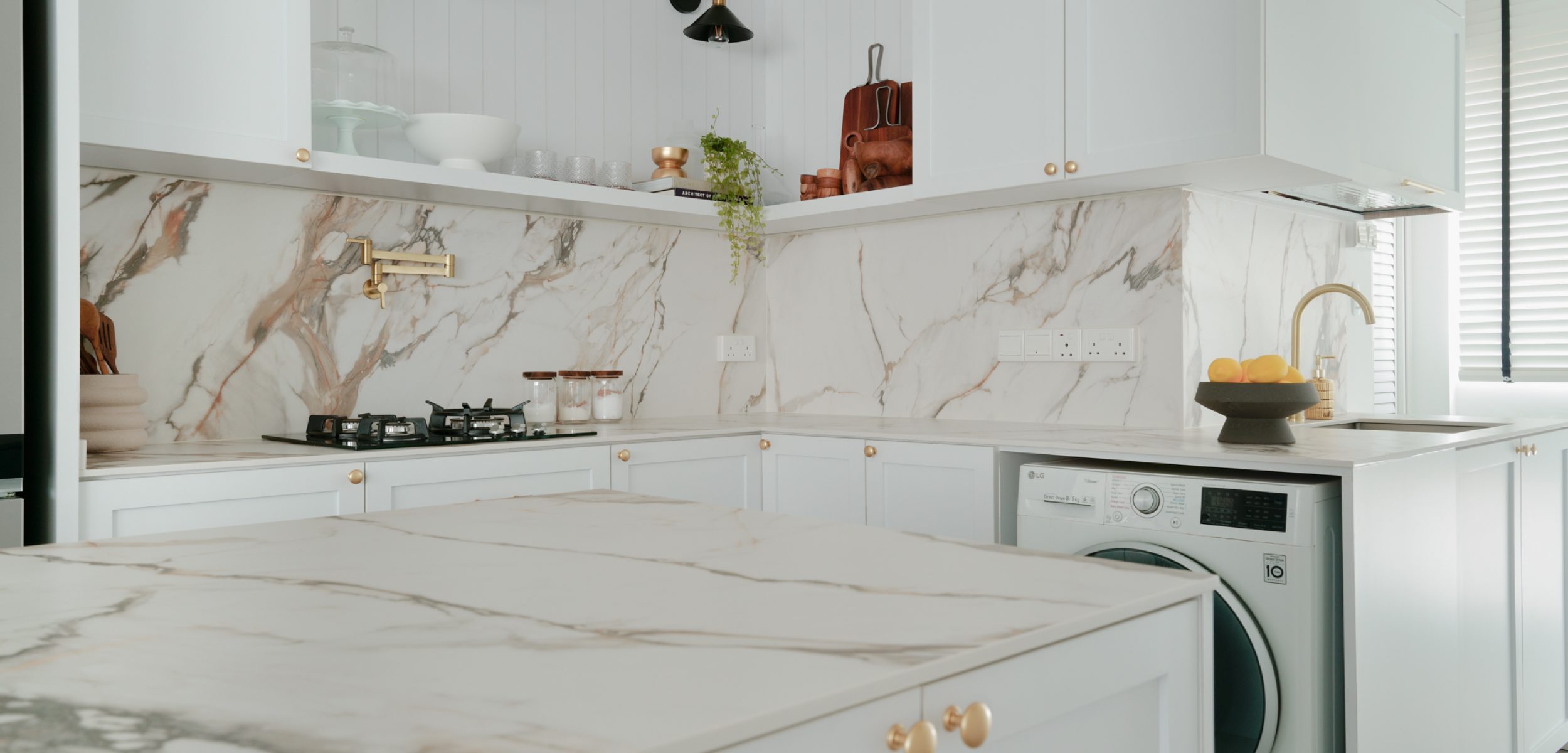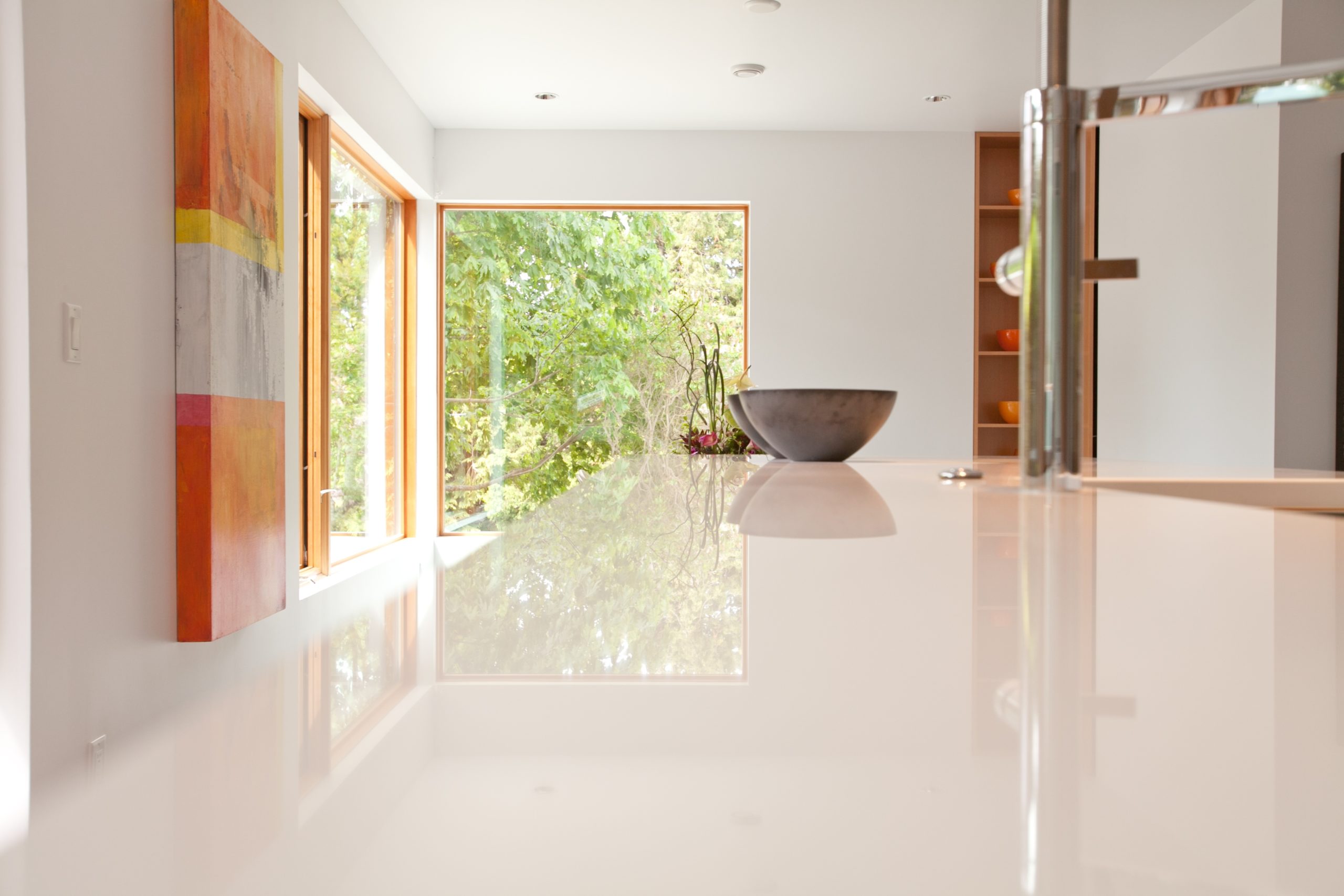When it comes to choosing the perfect type of stone material for kitchen countertops, there is a wide selection available. Two increasingly popular choices in the market are granite and sintered stone. Both of these materials offer unique characteristics and advantages that make them ideal choices in the world of interior design and home improvement. Let’s take a closer look at their common traits and what sets them apart from each other.
What is Granite and What is Sintered Stone?
Granite is an igneous rock that has formed deep within the Earth’s crust over millions of years. It is composed mainly of quartz, feldspar, and mica, which give it its unique and beautiful grain patterns and colour variations.
Sintered stone, on the other hand, is a custom-made material that is created through a process of extreme heat and pressure. It is composed of a mixture of natural minerals, such as quartz and feldspar, along with other materials like pigments and binders. This combination undergoes a manufacturing process known as sintering, where the particles are fused together to form a dense and durable material.
Common Characteristics
Both granite and sintered stone are known to be durable and long-lasting because they are some of the hardest stone surfaces. On the Mohs scale of mineral hardness, they score a 7 out of 10, which makes them harder than a knife and therefore, highly scratch-resistant. The process of creating durable slabs from these types of stone involves using intense heat, resulting in stone surfaces that have exceptional heat resistance. Granite and sintered stone are also known to be highly stain-resistant and can be easily cleaned with mild detergent and water or a recommended stone cleaner.
However, there are some distinct traits to consider when choosing your countertop material.

Why Granite is Better than Sintered Stone
Granite offers natural beauty with its unique patterns and colour variations that can only be created through a natural process. Each granite slab is one-of-a-kind, adding a touch of individuality to any space and giving it an elegant appearance. Not only is granite an excellent choice for kitchen countertops, but it also increases your home value due to its irreplicable natural stone aesthetic.
In terms of cost, granite tends to be more affordable compared to sintered stone. The price of granite can vary depending on factors such as colour, pattern, and availability. In contrast, sintered stone is generally more expensive due to its advanced manufacturing process.
Minor scratches and chips in granite countertops can be repaired with a resealing kit or by a professional. However, repairing sintered stone is more complex and expensive.
In terms of environmental impact, granite is a natural material that is sourced from the earth. While the extraction process requires energy and resources, it is still considered a more eco-friendly option compared to sintered stone, which is manufactured using various materials and processes.
Why Sintered Stone is Better than Granite
While the colour and pattern do not run throughout the whole thickness of the slab, sintered stone offers a consistent and uniform appearance on the surface, making it easier to match with different design styles. Since the sintering process is manufactured, there is a wide variety of design options that can be customised into the sintered stone slabs. Furthermore, stone slabs have to be joined by seams, but depending on the design, it is possible to have one solid piece made from sintered stone.
Both granite and sintered stone are known for their durability. They can withstand heavy use, heat, and impact without suffering any significant damage, making them a great material for countertops. However, sintered stone has a slight advantage in terms of resistance to scratches and stains due to its non-porous surface. This also makes them anti-microbial and waterproof, as there are no pores in the piece of stone for spilt food or water to get into. Sintered stone is also a popular material for bathroom countertops.
When it comes to maintenance, both granite and sintered stone are relatively easy to care for. However, granite requires regular sealing to protect its porous surface from staining, whereas sintered stone is non-porous and does not require sealing. It is also highly resistant to UV rays and will not fade or discolour, which is why it is also the material of choice for an outdoor kitchen or exterior walls.
Granite typically requires professional installation due to its weight and the need for precise cutting and sealing. Sintered stone, on the other hand, can be easier to handle and install, making it a more convenient option for some homeowners.

Which material is the one for you?
Granite and sintered stone are two popular choices for homeowners looking for stone countertops in their homes. Both materials offer durability and aesthetics, making them excellent choices for any interior design project. Whether you desire the natural beauty of granite or the versatility of sintered stone, both options are sure to enhance the look and functionality of your countertops. Consider the pros and cons of each material, factor in your budget and maintenance preferences, and work with knowledgeable professionals to decide which option suits your needs best. With either choice, you can transform your space into a stunning and functional environment that will stand the test of time.



